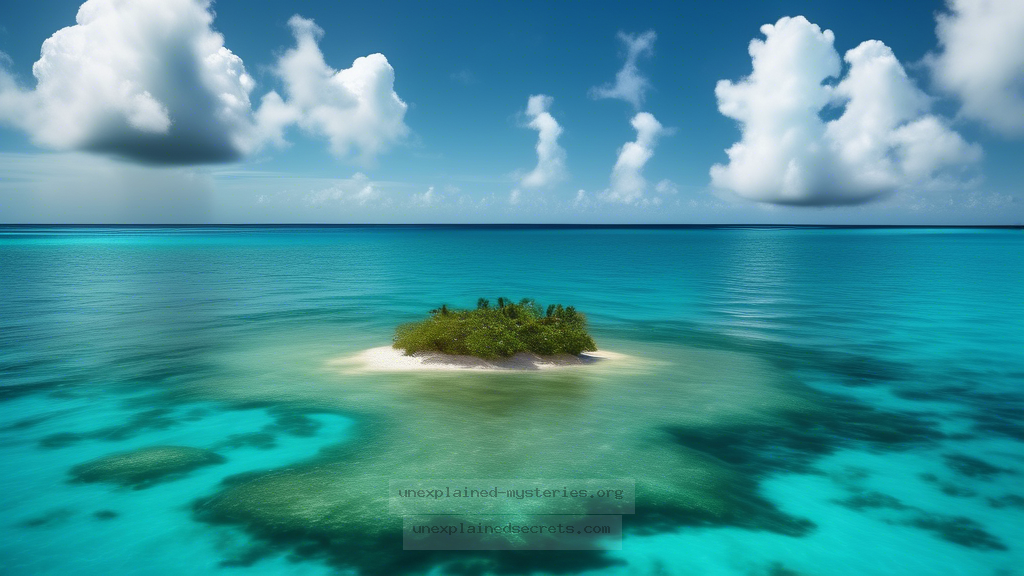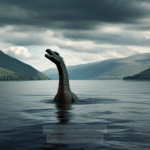What Secrets Lie Beneath the Waves of the Bermuda Triangle?
What Secrets Lie Beneath the Waves of the Bermuda Triangle?
The Bermuda Triangle, a region bounded by Miami, Bermuda, and Puerto Rico, has long captivated the imagination of both the public and scholars alike. This area has garnered a notorious reputation for the mysterious disappearances of ships and aircraft, leaving behind more questions than answers. Why does this region seem to be a magnet for unexplained phenomena? What are the potential explanations for the eerie occurrences reported by sailors and aviators? In this post, we will explore these questions in depth, examining historical accounts, scientific theories, and the ongoing fascination with this enigmatic locale.
The Historical Context of the Bermuda Triangle
The lore surrounding the Bermuda Triangle dates back to the early 20th century. One of the most infamous incidents occurred in 1918 when the USS Cyclops, a Navy cargo ship with over 300 men and a full load of manganese ore, vanished without a trace after leaving Barbados. No wreckage was ever found, and the disappearance remains one of the most puzzling maritime mysteries in history.
Subsequent reports of missing vessels and aircraft would only deepen the intrigue surrounding this area. The term “Bermuda Triangle” was popularized in a 1964 magazine article by Vincent Gaddis, who linked these disappearances to supernatural forces. His claims sparked a media frenzy, leading to a plethora of books, documentaries, and articles that sought to unravel the enigma of the Triangle.
Core Concepts: What Makes the Bermuda Triangle So Unique?
The Bermuda Triangle is not just a geographical location; it is characterized by a unique combination of environmental factors. The area is known for its unpredictable weather, strong currents, and deep underwater trenches. These elements can create treacherous conditions for both maritime and aerial travel.
One significant feature is the Gulf Stream, which is a fast-moving ocean current that can rapidly sweep away debris from sunken ships, making it difficult to locate wreckage. Additionally, the region’s underwater topography includes deep-sea trenches that can harbor large geological formations, further complicating navigation and rescue efforts.
Scientific Explanations: Are There Rational Reasons for Disappearances?
While many theories exist about the Bermuda Triangle, some scientists argue that the disappearances can be attributed to natural phenomena. One prevalent theory centers around methane hydrates—frozen gas deposits found on the ocean floor. If released, these hydrates could create massive bubbles that reduce water density, causing ships to sink rapidly.
Another scientific explanation involves sudden storms and waterspouts, which can arise unexpectedly in the region. These meteorological phenomena can create hazardous conditions for pilots and mariners, leading to tragic accidents.
Historical Accounts of Missing Vessels and Aircraft
Many documented cases have fueled the mystery surrounding the Bermuda Triangle. One notable example is the disappearance of Flight 19, a group of five TBM Avenger torpedo bombers that vanished during a training flight in December 1945. Despite extensive search efforts, no wreckage was ever found, and the incident remains a cornerstone of Bermuda Triangle lore.
Similarly, the disappearance of the Star Tiger in 1948 and the Star Ariel in 1949 are often cited as examples of the Triangle’s strange occurrences. Both aircraft vanished without distress signals, and searches yielded no results, further deepening the intrigue surrounding the area.
Alternative Perspectives: Debunking the Myths
While many sensationalized stories have emerged about the Bermuda Triangle, skeptics argue that the number of incidents is not disproportionate to other heavily traveled regions of the ocean. According to some analyses, the Bermuda Triangle is statistically no more dangerous than any other part of the Atlantic Ocean.
Critics also highlight how many of the alleged disappearances have been exaggerated or misreported. For example, many ships that supposedly vanished were later found to have been lost in storms or due to navigational errors, undermining the supernatural explanations.
Common Misconceptions About the Bermuda Triangle
One prevalent misconception is that the Bermuda Triangle is a mysterious vortex that transports objects to another dimension. This theory, while popular in fiction, lacks scientific backing. The area has not been found to exhibit any unusual magnetic fields that would support such claims.
Another misunderstanding involves the belief that the Bermuda Triangle is a designated geographical area, as if it were marked on maps. In reality, the Triangle is an informal label, and its boundaries are not universally agreed upon. This ambiguity has led to varying interpretations and sensationalized reports.
Practical Implications for Investigators and Researchers
For those interested in studying the Bermuda Triangle, it is essential to approach the subject with a critical mindset. Investigators should rely on empirical evidence and scientific reasoning rather than sensational narratives. Conducting thorough research into historical records, weather patterns, and maritime safety can provide a clearer understanding of the region.
Another key aspect is to collaborate with experts in marine science and aviation to gain insights into the factors that contribute to accidents in the area. Utilizing technology such as sonar mapping and satellite tracking can aid in uncovering the mysteries beneath the waves.
Future Developments: Ongoing Research and Exploration
The mysteries of the Bermuda Triangle continue to attract the attention of researchers and adventurers alike. Recent advancements in technology, such as underwater drones and advanced sonar imaging, offer new opportunities to explore the depths of the ocean and uncover lost vessels.
Moreover, interdisciplinary studies that combine oceanography, meteorology, and aviation science hold promise for shedding light on the complexities of the Triangle. As our understanding of the ocean deepens, we may finally begin to unravel the secrets that have eluded us for decades.
Conclusion: The Enigma of the Bermuda Triangle Endures
The Bermuda Triangle remains one of the most compelling mysteries of our time. While scientific explanations and historical accounts can provide context, the allure of the unknown draws countless investigators and enthusiasts to this region. Whether the truth lies in natural phenomena, human error, or something more enigmatic, the Bermuda Triangle continues to inspire curiosity and debate.
As research progresses and technology advances, we may come closer to understanding the secrets that lie beneath the waves. Until then, the Bermuda Triangle will remain a source of wonder and intrigue, captivating the minds of those who dare to question what lies beyond the horizon.
Other Articles
Recent Posts
- What Happened to Flight MH370? The Conspiracy Theories That Still Haunt Us
- What Secrets Lurk Within the Walls of the Infamous Trans-Allegheny Lunatic Asylum?
- What Evidence Supports the Existence of Bigfoot in the Pacific Northwest?
- What Happened to the Indus Valley Civilization? Unraveling the Mysteries of Ancient Urban Life
- Can Telepathy Be Scientifically Proven Through Laboratory Evidence?







